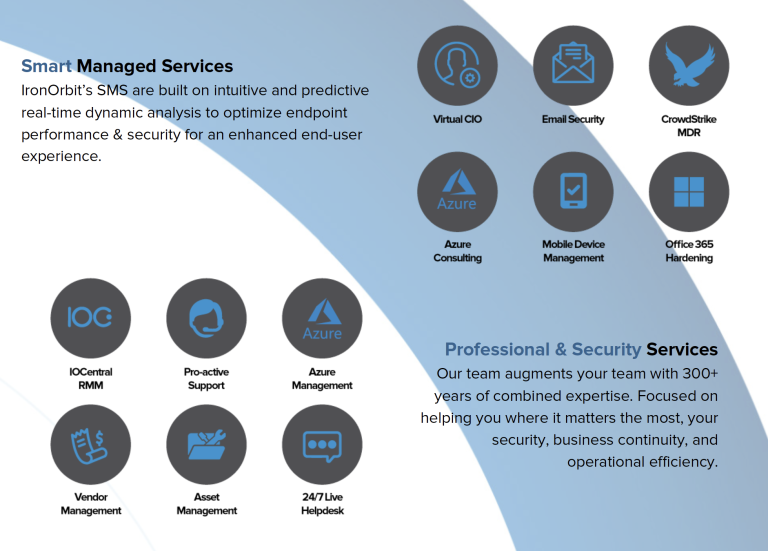Scaling up is the ability to take on increased workloads in a cost-effective manner and meet the demands of your business without suffering the negative consequences of overreaching.
Scaling up sounds like a fantastic idea. After all, who wouldn’t want to be able to handle more work, delivering more goods and services while leveraging economies of scale for greater profitability?
But the promise of scaling is often like an iceberg. What you see above the water (the work to be done) is nothing compared to the work lurking under the water. These are the challenges faced in scaling a business. Some companies get to a point where it is painful to add another client or bring on more talent. Scaling up seems like piling on more overhead for less reward. Revenue never has a chance to turn into profits.
Here are some barriers many companies may face as they ramp up their operations.
Scaling Up Too Soon
A good question to ask a good business consultant is, Is it too soon to grow the business? Any time before you have all the pieces in place and a strategy to scale is too soon. Is the market is ready to embrace and demand your products or services? Timing is everything. First, to go big into the market is sometimes a good idea, but sometimes not. Companies get eaten alive and never recover.
No Plan to Scale Up
Often the small to mid-size business fails in the efforts to scale for lack of planning. They have an objective and a vague notion of how to get there. Growth-minded companies might partner with that vendor or hire new employees. But all too often, a structured plan is missing. Having a strategy that guides the requirements, stages, and timeline for scaling is foundational for success. As a result, the timing is off, and the company is missing pieces of the puzzle. Frustration and failure soon follow.
No Understanding of the Difference Between Growth and Scaling
For most successful companies, growth came before scaling up. Taking time to grow allows SOPs to be established and perfected. Taking the time to grow enables hiring key people and building a solid reputation. These things are critical for financial backing to scale. Growth is a time to experiment and approve or discard strategic partners and vendors. Growth helps them understand the management and IT resources required for successful scaling. Multiplying processes and output without a substantial increase in resources is the foundation of scalability. Business leaders need to know if the company is prepared to scale up.
Unnecessary or Untimely Product/Service Additions
As soon as a company begins to have a little bit of success in their efforts to scale, they often become overzealous with their efforts to take over the marketplace.
They may move away from their core business too quickly and begin advertising products and services they are not prepared to deliver. Even if they can make a dollar on those tangential goods and services, they are taking resources away from what is central to their current revenue stream and their ability to scale.
Selecting the Wrong Partners & Vendors
Companies across the planet have learned the wrong partners or vendors can put companies at risk. Long supply chains and unproven vendors can have detrimental consequences on the delivery of goods and services to your customers, as well as injure brand reputations.
Avoid vendors and strategic partners who over promise and under deliver. There is no room for freeloading. Everyone has to do their part.
Lack of Internal Communication
Employees need to know the company culture and what is expected. Companies need complete buy-in from their workforce to scale up successfully. There also must be a strategy communicated internally. Along with the nuts and bolts of your well-laid strategy is a minefield of employee concerns, expectations, and emotions that you must address. If employees feel left out of the loop – or worse, insecure in their jobs – they will not be best positioned to support scaling efforts. Internal communication requires more than just a company-wide meeting or a series of internal memos sent out to senior staff. Instead, the business leaders must keep their finger on the pulse of how the staff is acclimating to the proposed and in-progress changes.

Verne Harnish’s book Scaling Up shows how to improve scalability. Scalability requires putting the right team together and then educating them on the growth strategies of the company. Articulate a clear vision for meeting future goals regularly.

The last decision Steve Jobs made was to build Apple University.
He knew that it would be the one legacy he’d leave behind so that his organization would thrive long after he was gone.
Cutting Prices
Once you’ve been able to leverage some economies of scale, there is often a temptation to cut prices to undercut the competition and gain more market share. “After all,” you think, “We’re still making the same amount on our goods/services.” While it’s tempting to cut your prices and try to push the competition out of business, the money you will lose is better saved and utilized within your scaling efforts.
Technology That Can’t (or Can’t Easily) Scale-Up
Whether you’re working with legacy systems that keep your productivity limited, or you’re working with on-site workstations and servers that are expensive and cumbersome to scale, your technology is limiting your potential. This roadblock used to be a nearly insurmountable one for businesses trying to scale on a budget. However, with advances in cloud-based IT infrastructure and Desktop as a Service, the financial hurdle considerations are lowered due to the cloud’s ability to scale with your business expansion. Companies across the planet have factored cloud computing ability into their scaling strategy and are successfully leveraging the flexibility, mobility, and cost-effective nature of cloud workflow assets.
As an IBM fellow, Jason McGee puts it, migrating applications to the cloud can deliver significant business benefits for companies of all sizes.
Failing to Create Long-Term Demand
Business leaders that fundamentally misunderstand the role of advertising and marketing often pin their hopes of scaling on the stop-and-go stutter-step of marketing efforts. While marketing strategy should always be a part of your scaling endeavor, it is not sufficient on its own to supply continuous, qualified customers. Instead, part of any scaling strategy should be a plan to grow market demand for your products/services. After all, you want them knocking on your door for what you provide; you don’t want to be chasing work constantly with ad campaigns.
Cash Flow and Credit
There is no way around it, scaling requires sufficient cash flow. Many organizations with a fantastic plan to scale launch that endeavor, only to find that their efforts are stymied by lack of on-hand cash or credit. In a recent episode of “What’s Up AEC?!” the Immediate Past Board Chair of ACEC National, Charles Gozdziewski warns about the cash flow aspect of scaling up too quickly. “I’ve seen small firms suddenly become part of a big project. They go from 10 people to 25 people and then they go bankrupt. They just don’t have the financing or financial knowledge to handle it.”
Each stage of your scaling strategy will require more financial backing, and that backing must be available at that stage or things begin to unravel. Setting yourself up for success requires ensuring that you will have the backing you need well in advance of your step to the next level of operational expansion.

Scaling up starts and ends with individuals. Make sure you have the right people in the right seats.
Quality Employees Instead of Quantity
Scaling starts and ends with individuals. Whether you are in a service industry or manufacture goods, your employees can make or break your scaling prospects. As much as anything else, scaling requires the right beliefs and behavior. Growth-oriented companies need people who are comfortable with change, who can move fast, and take ownership of tasks. In the rush to scale, companies often hire too quickly and find that they experience internal roadblocks to productivity because of the unqualified staff they’ve hired. Unfortunately, companies that are quickly ramping up delivery of goods and services often don’t have time for extensive employee training or the flexibility for employees to learn “on the job.” A resourceful HR team should be among your first hires to help ensure that your business sources and hires employees that can step in and do the work without handholding.
Ignoring Growth Pains and Fixating on Growth Pains
Whether leadership is determined not to let that “one issue” hold things back or fixate on that “one issue” to the detriment of other things that require attention, it still lands the administration in a difficult spot. On the one hand, small issues at one stage of scaling can become mountains of pain in the next stage of expansion. On the other, a fixation with a specific issue can lead to an unhealthy overemphasis on one aspect of the business, throwing everything out of kilter.
To scale, you must be aware of growing pains and be able to handle them appropriately without devoting all your attention and resources to those problems.
Micromanagement
Organizations with micromanagers at the top very often do not do well when it comes to scaling up operations. Delegating responsibility is an essential component of scaling an enterprise. A business leader must know their self well enough to see this tendency in themselves before it becomes an issue that derails the scaling process. Sometimes, it’s necessary to step into a different leadership role and allow someone that has delegation skills to fill that administrative slot. As you scale, so should your management structure. Finding the right role for you to play and bringing in the people you need to bolster your weaknesses is a sign of a good leader.
In Conclusion
Despite significant roadblocks to developing capacities to scale up quickly, there are multiple benefits for an organization to prepare itself for the likelihood of scaling up.
The challenges of scaling up are complex because scalability isn’t just about growth. It also has to do with its ability to be flexible, agile, and versatile. The same things that position the business for expansion are the same things that prepare them for unknown shifts in the market and unforeseen events like a worldwide pandemic. Preparedness is all about becoming proactive and being strategic with digital technology.
In a Forbes article from March 1, 2021, Paolo Gallo and Giuseppe Stigliano write, “Because of the dizzying speed of change today, fueled by this umpteenth acceleration, companies can’t count on their strengths alone to innovate. The CEO of a mobility services company reminded us how crucial it is at this stage to build eco-systems, resisting the temptation to reduce them to ego-systems. We have to collaborate with third parties to build systems in which the individual parts function as a single entity, in a more or less continual way to provide high-value-added services to final customers. Companies have to see themselves as fluid platforms, capable together of providing a value proposition that is exponentially bigger than what they could offer alone.”
In one of our previous blogs, we stressed the importance of componentization as a key ingredient to offering new digital value propositions. Taking the time to componentize offerings and build a solid digital foundation for your company will also position it for agility, flexibility, and growth.
The in-depth Deloitte Insights article, Putting Digital at the Heart of Strategy, goes beyond pointing out that digital transformation enables new growth opportunities. It indicates that those companies that don’t digitize in the next five years will be doomed.
Digitizing operations, a key benefit of cloud computing, improves an organization’s ability to meet sudden increases (or decreases) in demand.














